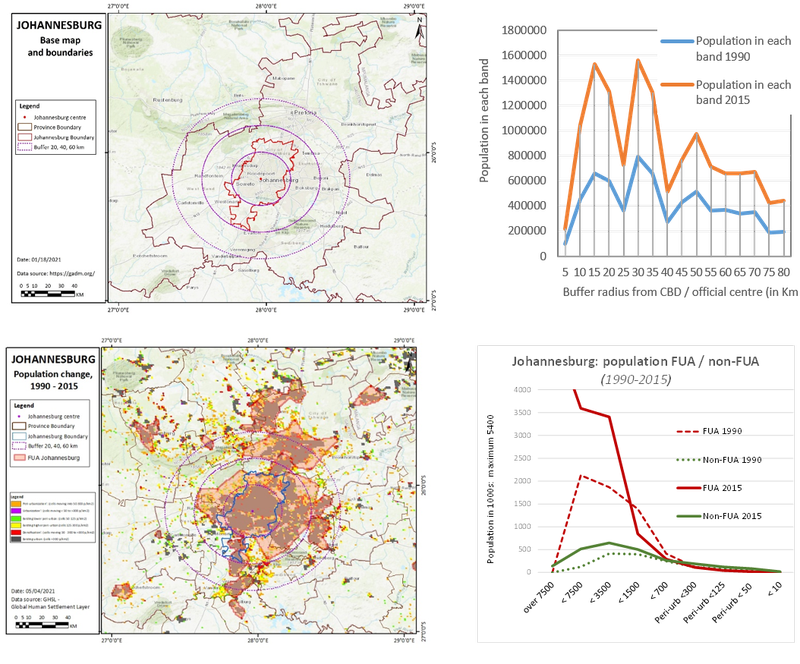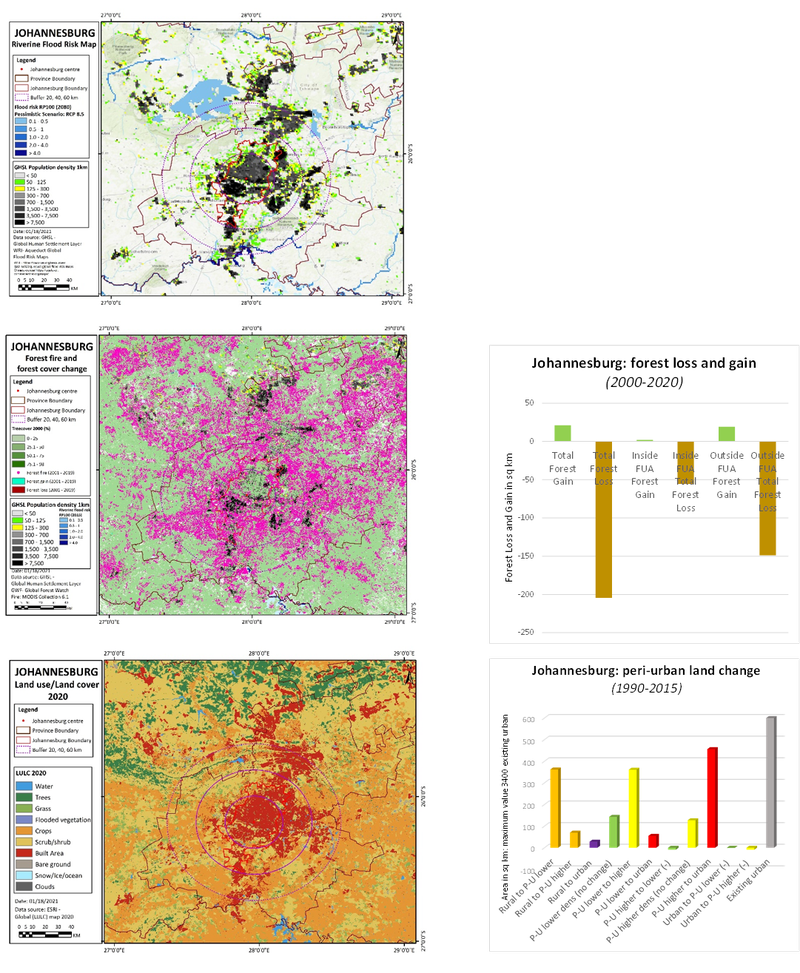Peri-urban issues
Spatial analysis: (from charts below)
- Urban areas: growth in high & medium density
- Non-urban areas: growth in medium density
- Apartheid spatial planning has defined the SA "Peri-cene": Joburg hinterland is the Gauteng-City Region stretching over Joburg, Pretoria and Vereeneging.
- Huge residential component to the Joburg Peri-cene: both informal, govt housing (RDP) and new gated communities.
- So as Africa's "arrival city" the Peri-cene in Joburg is connected to the whole continent, with economic priority of mining: not only on the urban edge, but within the City too, deeply connected to rural networks
- Planning policies post-apartheid - "compact city" and TOD: but with privatisation of housing and services, and historical apartheid planning as a key driver. Since democracy, a move to a neo-liberal democracy: govt housing relied on the private sector -> housing projects on cheap peripheral land. Dependent on international donor orgs and loans.

Climate change issues
- Rising temperature & regular droughts & water stress
- Flooding due to building under the water lines
- Polluted rivers making residents sick: toxic land from mining waste
- Fire a huge problem in informal settlements

Societal & governance issues
- Historic apartheid policy still is evident in space: with xenophobia - the marginalization of local South Africans towards other African migrant groups
- State-owned enterprises filled with corruption: distrust and cynicism of government: data collection is weak: Siloes between spheres of government and within spheres
- Crime, unemployment, inequality very high: youth unemployment major issue
- poor waste collection services: informal taxis filling the gap of insufficient transport
- informal sector is massive, but not enabled: diverse and rich cultural offering, but no market: many street committees, trading associations,
- Mining communities exploited and under-serviced, with mines' toxic waste: huge mining companies
- private sector-driven development, with private housing and services companies
- Organised land grab groups: business forums or SMMES (often understood to be gangsters)
large-scale white-owned peri-urban farms
